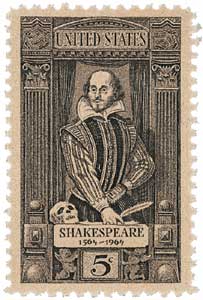
# 4430 - 2009 44c Contemporary Christmas: Snowman, ATM booklet
Winter Holidays – Snowman
2009 Contemporary Christmas
ATM Stamp
Issue Date: October 8, 2009
City: New York, NY
Making a snowman is a time-honored winter tradition, as laughing children build and decorate the snowman. If Mom (or Dad) is alert, then mugs of steaming hot cocoa (with marshmallows, please!) are waiting when the rosy-cheeked builders trudge back inside and shed their winter clothes. Snowman construction, however, is more than child’s play; it is a serious feat of engineering.
First, the right kind of snow is needed for a snowman. “Packing” snow needs to be moist and sticky. If it’s too powdery, the snow won’t stick together. To start a snowman, you need to make a snowball and keep packing snow on it until it’s too big to hold. Then, set it on the ground and start rolling it around the yard, until it gets too heavy to move. Make two similar balls of snow, each slightly smaller, and stack them on top of the first. Nearly anything can be used to decorate and add detail to the snowman – carrot nose, sticks for arms, buttons for the mouth, and stones for the eyes.
So far, the largest snowman on record was built in Bethel, Maine, in 2008 and stood more than 122 feet high. It was named after Senator Olympia Snowe. It beat the old record set in 1999 (also in Bethel). That year, “Angus, King of the Mountain,” was 113 feet high and weighed 9,000,000 pounds.
Composer Erich Wolfgang Korngold was born on May 29, 1897, in Brünn, Moravia, Austria-Hungary. A child prodigy, his technical skills and understanding of music combined to make him one of the most talented, yet underrated, musical figures of the 20th century. The son of a music critic, Korngold was frequently referred to as “a new Mozart.” By the time he was five, he could play four-hand piano arrangements with his father. He could also play any melody he heard with complete, elaborate chords. He started writing his own original music by the time he was seven. At the age of 10, Korngold performed an excerpt from his original piece Gold for Gustav Mahler, then the most influential composer in Vienna. Mahler hailed Korngold as a “musical genius.” He also said there was no point in sending him to a musical conservatory since he was already far ahead of anything he’d learn there. When he was 13, Korngold’s ballet Der Schneemann (The Snowman) became a hit, and the show was performed on the stages of 40 different opera houses in the years to come. Korngold continued composing popular works throughout his teen years, including his first orchestral score, the Schauspiel-Ouvertüre and his first two operas, Der Ring des Polykrates and Violanta. Korngold’s greatest success came in 1920 when his opera Die Tote Stadt (The Dead City) was performed in Germany. He then began re-creating the scores of Johann Strauss II with his own style. This gained the attention of director Max Reinhardt, with whom he began collaborating. Among these was Waltzes From Vienna, which was later the basis for a 1934 Alfred Hitchcock film. In addition to his composing and conducting work, Korngold also taught opera and composition at the Vienna State Academy and received the title professor honoris causa by the president of Austria. In 1934, Korngold supervised the scoring of A Midsummer Night’s Dream for Warner Bros., which was his first work in Hollywood. Korngold’s elaborately orchestrated score proved to be a major influence on the film industry after that. After scoring Give Us This Night, Korngold was invited to score Captain Blood. Initially, he didn’t think he wanted to score a pirate movie, but after seeing the young new star Errol Flynn in action, he changed his mind. The film was an instant hit, launching Flynn’s career, inspiring a resurgence in costumed, romantic adventures, and earning Korngold an Oscar nomination for the score. Korngold soon signed a contract with Warner Bros., and won Academy Awards for Anthony Adverse (1936), and The Adventures of Robin Hood (1938). In all, Korngold wrote the scores for 16 Hollywood films and is often considered one of the founders of film music. After World War II, Die Tote Stadt became the first German opera produced by the Metropolitan Opera in New York City. Korngold retired from film composing in 1947 and spent his final years composing concert pieces and his sixth opera. Korngold died on November 29, 1957.Birth of Erich Wolfgang Korngold





Winter Holidays – Snowman
2009 Contemporary Christmas
ATM Stamp
Issue Date: October 8, 2009
City: New York, NY
Making a snowman is a time-honored winter tradition, as laughing children build and decorate the snowman. If Mom (or Dad) is alert, then mugs of steaming hot cocoa (with marshmallows, please!) are waiting when the rosy-cheeked builders trudge back inside and shed their winter clothes. Snowman construction, however, is more than child’s play; it is a serious feat of engineering.
First, the right kind of snow is needed for a snowman. “Packing” snow needs to be moist and sticky. If it’s too powdery, the snow won’t stick together. To start a snowman, you need to make a snowball and keep packing snow on it until it’s too big to hold. Then, set it on the ground and start rolling it around the yard, until it gets too heavy to move. Make two similar balls of snow, each slightly smaller, and stack them on top of the first. Nearly anything can be used to decorate and add detail to the snowman – carrot nose, sticks for arms, buttons for the mouth, and stones for the eyes.
So far, the largest snowman on record was built in Bethel, Maine, in 2008 and stood more than 122 feet high. It was named after Senator Olympia Snowe. It beat the old record set in 1999 (also in Bethel). That year, “Angus, King of the Mountain,” was 113 feet high and weighed 9,000,000 pounds.
Composer Erich Wolfgang Korngold was born on May 29, 1897, in Brünn, Moravia, Austria-Hungary. A child prodigy, his technical skills and understanding of music combined to make him one of the most talented, yet underrated, musical figures of the 20th century. The son of a music critic, Korngold was frequently referred to as “a new Mozart.” By the time he was five, he could play four-hand piano arrangements with his father. He could also play any melody he heard with complete, elaborate chords. He started writing his own original music by the time he was seven. At the age of 10, Korngold performed an excerpt from his original piece Gold for Gustav Mahler, then the most influential composer in Vienna. Mahler hailed Korngold as a “musical genius.” He also said there was no point in sending him to a musical conservatory since he was already far ahead of anything he’d learn there. When he was 13, Korngold’s ballet Der Schneemann (The Snowman) became a hit, and the show was performed on the stages of 40 different opera houses in the years to come. Korngold continued composing popular works throughout his teen years, including his first orchestral score, the Schauspiel-Ouvertüre and his first two operas, Der Ring des Polykrates and Violanta. Korngold’s greatest success came in 1920 when his opera Die Tote Stadt (The Dead City) was performed in Germany. He then began re-creating the scores of Johann Strauss II with his own style. This gained the attention of director Max Reinhardt, with whom he began collaborating. Among these was Waltzes From Vienna, which was later the basis for a 1934 Alfred Hitchcock film. In addition to his composing and conducting work, Korngold also taught opera and composition at the Vienna State Academy and received the title professor honoris causa by the president of Austria. In 1934, Korngold supervised the scoring of A Midsummer Night’s Dream for Warner Bros., which was his first work in Hollywood. Korngold’s elaborately orchestrated score proved to be a major influence on the film industry after that. After scoring Give Us This Night, Korngold was invited to score Captain Blood. Initially, he didn’t think he wanted to score a pirate movie, but after seeing the young new star Errol Flynn in action, he changed his mind. The film was an instant hit, launching Flynn’s career, inspiring a resurgence in costumed, romantic adventures, and earning Korngold an Oscar nomination for the score. Korngold soon signed a contract with Warner Bros., and won Academy Awards for Anthony Adverse (1936), and The Adventures of Robin Hood (1938). In all, Korngold wrote the scores for 16 Hollywood films and is often considered one of the founders of film music. After World War II, Die Tote Stadt became the first German opera produced by the Metropolitan Opera in New York City. Korngold retired from film composing in 1947 and spent his final years composing concert pieces and his sixth opera. Korngold died on November 29, 1957.Birth of Erich Wolfgang Korngold












